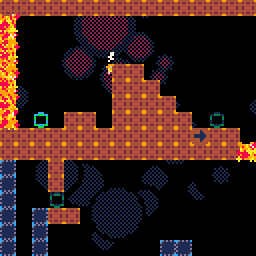
The common idea for all three iterations was that every effect is a function, which performs some initialization procedures and then returns update and draw functions for the effect. Every time I had rewritten the code from scratch, I got fewer tokens and better readable code. I called it a “scenario system.” In PICOCHAK, it went through three iterations. To transform a bunch of effects to a demo, it needs some control system which provides synchronization with music and switches effects. Scenario system - connecting all effects together This article is about the unique PICO-8 challenges I faced when creating PICOCHAK. I’m not going to write about the implementation of effects, because it’s pretty easy to find all the necessary information on the Internet. To fit this much sprites, I used the PX9 compression algorithm by Zep. As mentioned above, the demo has 446 8x8 sprites, while PICO-8 has a memory for 256 sprites only. I also re-created three classic effects: roto-zoomer, twister, and bump mapping.
Textures (without perspective correction). I had already had a simple 3D engine on PICO-8, but for PICOCHAK I added some new features: For my “demoscene comeback,” I wanted to re-create some classic demoscene effects because I missed the opportunity to do them on real retro-hardware back in time. I didn’t have the goal of inventing something new and unique. Never-ending battle with platform constraints, inventing coding tricks, finding smart ways to improve the code - these were a breath of fresh air, which helped me to deal with the burnout I got at my daily job. I haven’t had so much fun while coding since the 4K intro “Malady” I made for ZX Spectrum back in 1999. With this demo, I wanted to push PICO-8 limits, because that’s what retro demoscene is about, in my opinion. PICO-8 has many limitations, just like real retro hardware. 5 3D models (569 vertices and 1120 triangles in total). Our demo took second place in the console demo competition. Chak-chak is a Tatar national sweet, so we made it a protagonist in the story, hence the name - PICOCHAK. 
By mixing these, we got our “Tatar food in space” idea. As CAFe is held in Kazan, the capital of Tatarstan, Oleg suggested using Tatar food references.
Damir Nasyrov (Adam Bazaroff) - Tatar culture expert. Alexey Golubtsov (Diver/Stardust) - graphics. I wasn’t creating PICOCHAK alone other members of the PICOCHAK team are: In 1999, CAFe became the first party I had visited. 
The moment I had learned that CAFe demoparty is going to be back in 2019, I decided to take part in it.






 0 kommentar(er)
0 kommentar(er)
